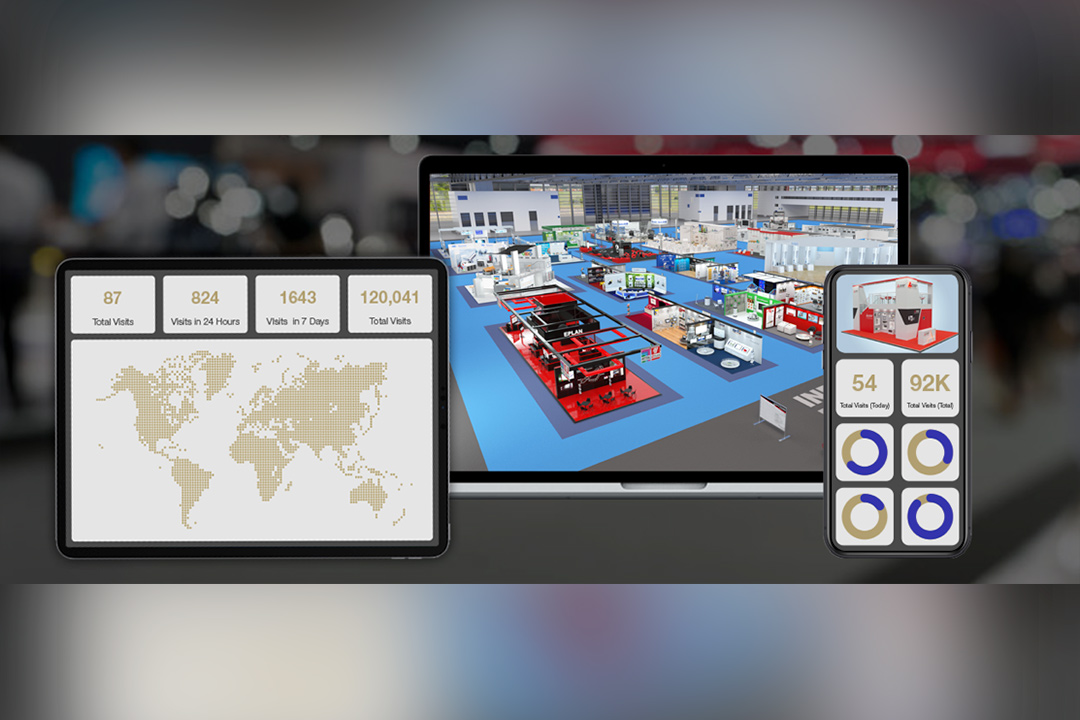This text is reproduced with kind permission of Image Reports, you can read the original article here on Image Reports.
In June the Printing Expo Virtual Exhibition opened up online. So, with travel restrictions still a key consideration, is this the way of the future – and to what extent do environmental concerns come into play?
“Virtual exhibitions can reduce carbon emissions by 99% when compared to equivalent live events.” That’s a conclusion drawn from the recent paper ‘Making industrial exhibitions green’ based on the ISO 20121 standard comparing a virtual trade show with several live physical events, and flagged up by Wayne Beckett, joint managing director of Resolve Business Management, the organiser of the new printing-expo.online virtual trade show.
As we are aware, and as Beckett reiterates here, there are a huge number of benefits to an event hosted online – especially in the current climate, and taking into account the technology platforms now available to create compelling exhibitions. So, are virtual shows the way of the future – and should we be getting excited about their green credentials as much as anything else?
There are obvious attractions. Aside from the added convenience to visitors of shows like printing-expo.online being available 24/7, there is no travel or accommodation required. Show navigation tools – including a search function, products list and company profiles – further ensure visitors can easily find their way around. Big ticks there.
Exhibitors can populate their ‘stands’ – built using a combination of 3D rendering, photography and HD video – with interactive content that visitors can explore and download. More ticks.
And if you’re wavering over ticking the ‘environmental’ box just think that number of tradeshows organised in continental Europe alone during 2019 exceeded 2,670, bringing together over 735,500 exhibitors and 75.4m visitors. When you consider the carbon equivalent (CO2-eq) for a single three-day, mid-size trade show is over 500 tonnes, then this extends into the millions of tonnes globally per annum.
Beckett continues with the eco-analysis: a three-day conference with 800 attendees has a carbon footprint of 455 tonnes of CO2 equivalents (CO2-eq), corresponding to an average of 0.57 tonnes CO2-eq per participant. The main contributors to these emissions are travel activities, which accounts for a total of 378 tonnes CO2-eq or 0.47 tonnes CO2-eq per attendee. These are followed by hotel overnight stays (39 tonnes CO2-eq in total) and catering (20 tonnes CO2-eq, 0.25 tonnes CO2-eq per individual).
A three-day fair with 120 exhibitors and 11,600m2 of occupied surface can generate 75.5 tonnes CO2-eq, 50.6% of which come from heating and lighting of the venue, for a total of 38.2 tonnes CO2-eq. The second greatest contributor to the environmental impact of the preparation of a fair is the assembly of spotlight bars and carpets – over 20% of total emissions. This activity is followed by the assembly of electronic equipment, which is responsible for over 15% of total CO2-eq.
Using virtual exhibition platforms – such as V-Ex, which is hosting printing-expo.online – traditional venue owners can now render physically accurate trade shows using real-world lighting, materials and dimensions to recreate virtual twins. The ‘virtual’ halls and stands can look visually identical to the bricks and mortar versions and host most of the same trade show subjects.
Beckett points out that V-Ex was designed from the outset as an interactive 3D environment to support large-scale virtual trade shows with hundreds of stands and thousands of visitors. He believes trade shows that deal with services, physical products and machines or software transfer very easily to a digital format.
“We are currently building show rooms for two large SEOs to assist their sales and marketing teams display and promote equipment as well as to launch new products. Our virtual exhibition provides a platform on which to do this right now, when physical alternatives are not an option.”
On a final environmental note, Beckett adds: “I’ve seen the large amount of waste generated at the end of trade shows when the stands are deconstructed, and a huge amount is binned as the waste tends to be of mixed materials. With a virtual show, the stands are never dismantled, just updated as often as the exhibitors like.” Sounds like a win, win?

